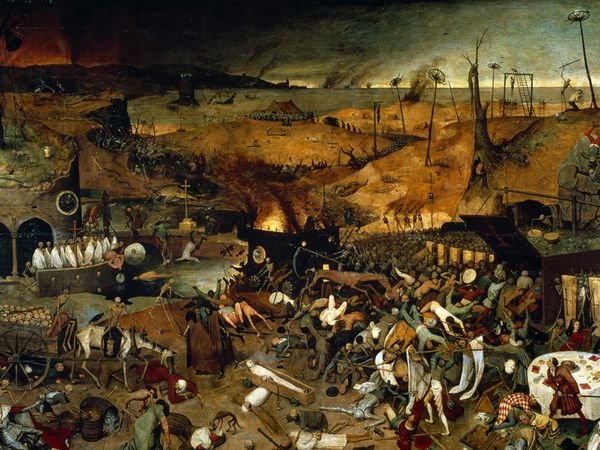
Dismissing as dogma the conventional medical wisdom that flu is a virus passed by human contact, the distinguished astrophysicist Sir Fred Hoyle, and his colleague at Cardiff university, Chandra Wickramasinghe, warn that we may be on the brink of a global epidemic.
In a report to be published in the journal Current Science, they claim the outbreak was caused by dust deposited high in the atmosphere by passing comets being forced down to earth by energy generated by cooler patches on the sun's surface, known as sunspots.
They reach the peak of their activity, the maxima, every 11 years, coinciding, the scientists say, with all major flu outbreaks since 1761, including the 1918 Spanish flu pandemic blamed for 20m deaths worldwide. The latest cycle began to peak in September and the maxima is due sometime this year.



I get: 1918, 1929, 1940, 1951, 1962, 1973, 1984, 1995, 2006, 2017.
But the actual data is "about" 11 years.
When I look at the butterfly plot at Wikipedia I get this sequence:
1918, 1929, 1940, 1950, 1960, 1970, 1982, 1992, 2003, 2014 (about).
It's not a step-pattern on the butterfly graph, but a more gradual change.
The graph of sunspot counts is easier to read in this regard, but I couldn't find one covering the whole period. From an Australian site I get this series:
1917, 1928, 1937, 1947, 1957, 1968, 1979, 1989 .. 2001 ... 2013? extended using a PDF from another site (Columbia University).
This suggests the outbreaks may lag 1 or 2 years from the sunspot maxima.
However, the comet (or whatever) impacts may coincide more closely with the actual sunspot maxima. If so, we could get a nice little bombardment late this year - early next year, then see a disease outbreak about a year after that.